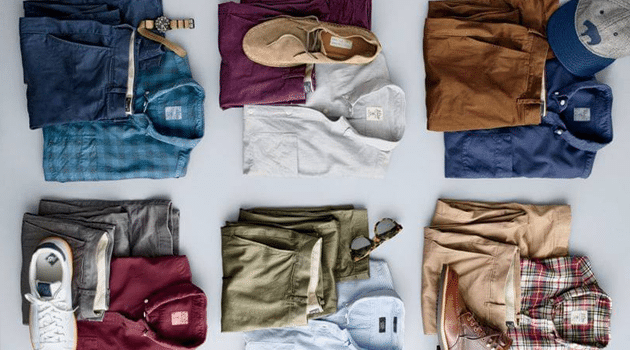In the world of the peacock, males have but two outfits: the ordinary one and the one that works.
Sadly, when it comes to us humans, most of us eschew the excitement of color in favor of predictable neutral tones.
Just look down any city street in the world: the closest many men get to “multiple tones” is cyan shirt, navy pants. Since when did the world settle for uniforms?
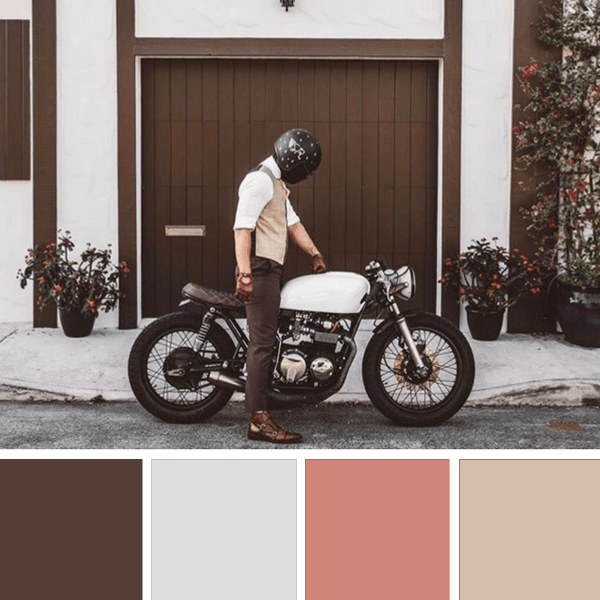
Thankfully, there’s a better way. Instead of leaving color for the birds, this guide will teach you a brand new approach to building outfits that both keeps the clothes you have and leaves room for the tasteful addition of colors.
Instead of a single-serve “Season’s Colors” listicle, this guide will arm you with the knowledge and confidence to work colors into your outfits any day, any year, no matter the trend.
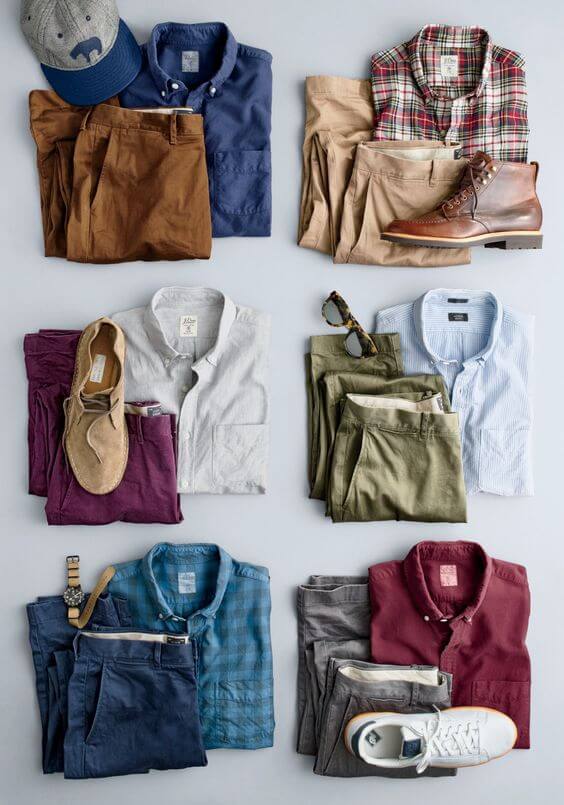
Sound good? Groovy.
Before we jump ahead to the good stuff, we must first go back – all the way to your first school art class.
At some point in your childhood, a kindly teacher showed your class of munchkins a color wheel.
If you don’t remember what it looks like (or if said teacher was more cruel than kind), here it is below:

The color wheel maps relationships between colors of the rainbow. The primary colors (red, blue, yellow) evenly divide the wheel into thirds.
Halfway between each pair of primaries is its respective “secondary” color (green, violet, orange).
This pattern repeats.
Directly across the wheel lies a color’s “complement” – in other words, the hue that best enhances that original color when placed alongside it.
If you’ve ever been wowed by a blockbuster movie poster, you’ve witnessed the blue/orange complement at work.
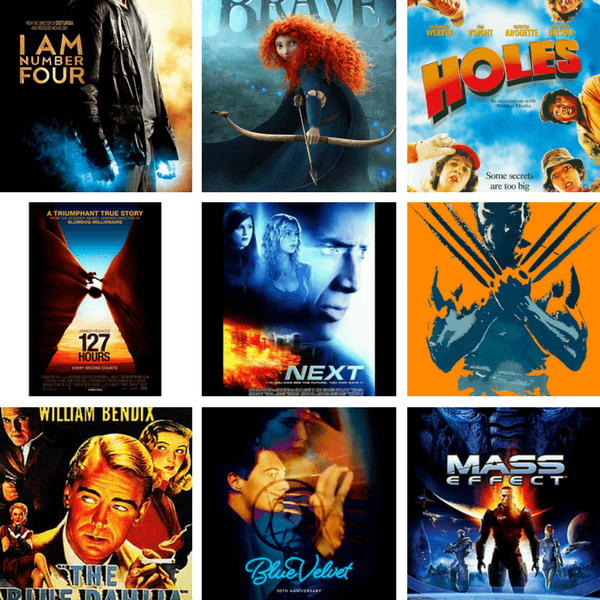
However, simply knowing which colors augment which is but half the battle. Unlike a superhero on said movie poster, leaving home every day…
As that same teacher likely reminded you, the devil’s in the details.
When it comes to colors, those details are expressed as three measures, all of which are integral to, well, making color happen.
These three devils are:
- Hue (the color itself)
- Saturation (the intensity of the color)
- Brightness (the amount of white or black mixed in with the color).
Varying these three traits produces millions of slightly-different colors – when you think about it, navy is just a less bright blue.
By then varying the saturation of that navy alone, you’ll get everything from Fjallraven’s faded blues to the inky midnight of a Tom Ford tuxedo.
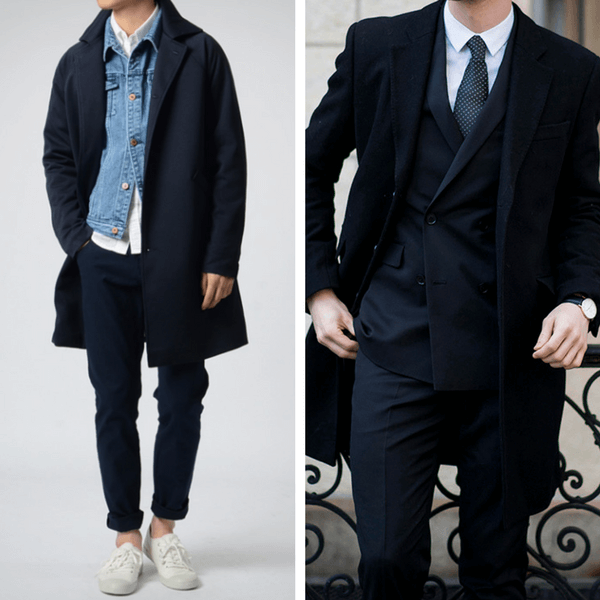
Here’s where it gets cool.
As you can tell from the above, the little things make a big difference. As you can also tell by the outfits assembled, colors at the same level of saturation and brightness tend to mesh pretty well with one another.
Black and white excluded (grey, too, for obvious reasons), all hues at the same brightness and saturation will look good in combination.
The upshot: incorporating any single color into monochromatic (or majority-neutral) outfits is as easy as matching its saturation and brightness to the colors already there.
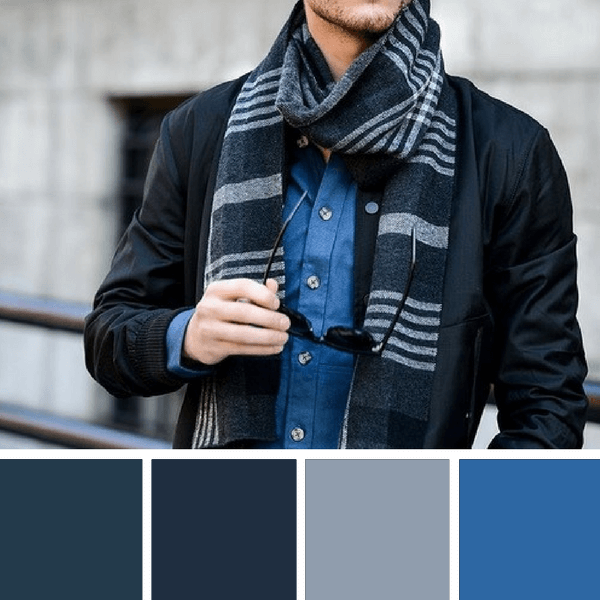
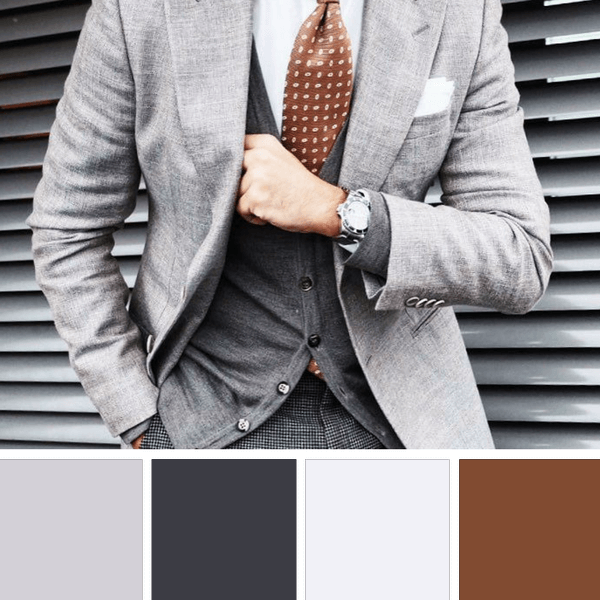
But there’s more.
Thanks to our deep roots in nature, we’ve evolved to perceive certain arrangements of hues as beautiful.
Think of the vivid yellow, blue, white, and purple of an ocean sunset: these colors aren’t just stunning in the sky, but also tend to look great on clothes, too.
There’s a reason for this.
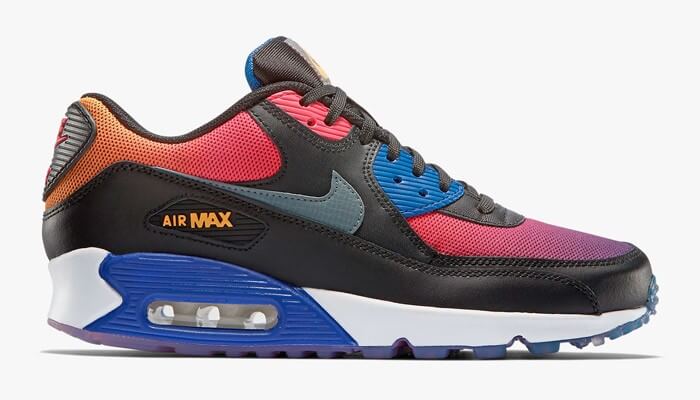
Given that brightness and saturation match, certain colors just look better together than others.
These aren’t exclusively complementary colors, either – just colors that, when laid out without any visual stimuli, intuitively work.
We call these arrangements “color palettes.”
Color palettes are the single most powerful tool for tastefully building color into your wardrobe.
Just use a random palette generator like Paletton, “lock” the colors you already own, then randomize the rest. You don’t have to dress every color in the palette to achieve the effect, but for guys looking to add excitement back into a monochrome wardrobe, adding black and white to a palette generator and then choosing a few favorite colors from the output will go a long way.
When done right, dressing in color palettes doesn’t just build cohesive outfits – it opens up your personal style to a world of tasteful, endlessly-stylish possibility.
Don’t believe it? Last year, fashion blog AS RAKESTRAW analyzed some of reddit fashion’s highest-rated outfits by pulling out their color palette.
The results: color, style, and above all, a simple solution. See for yourself below:
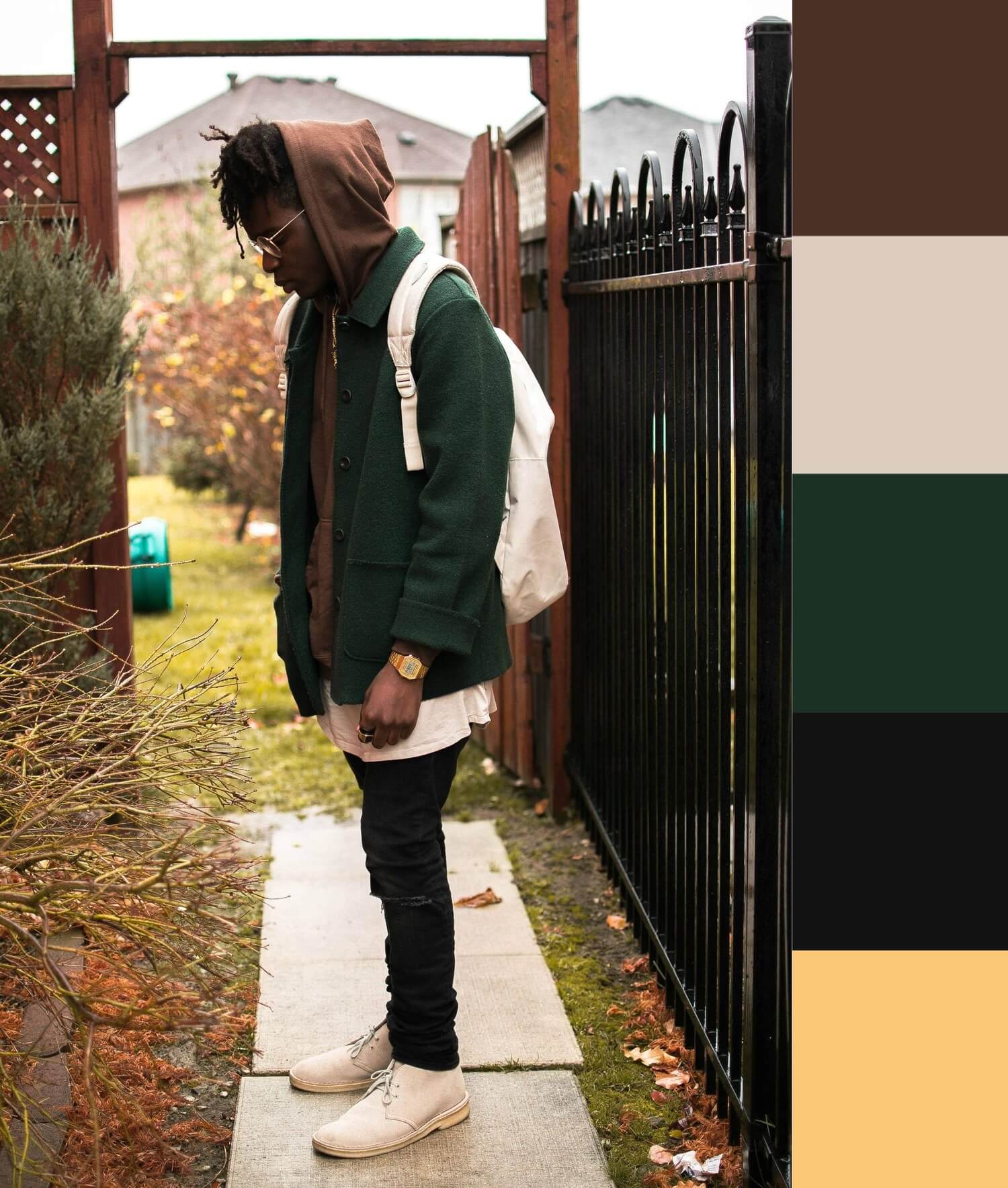
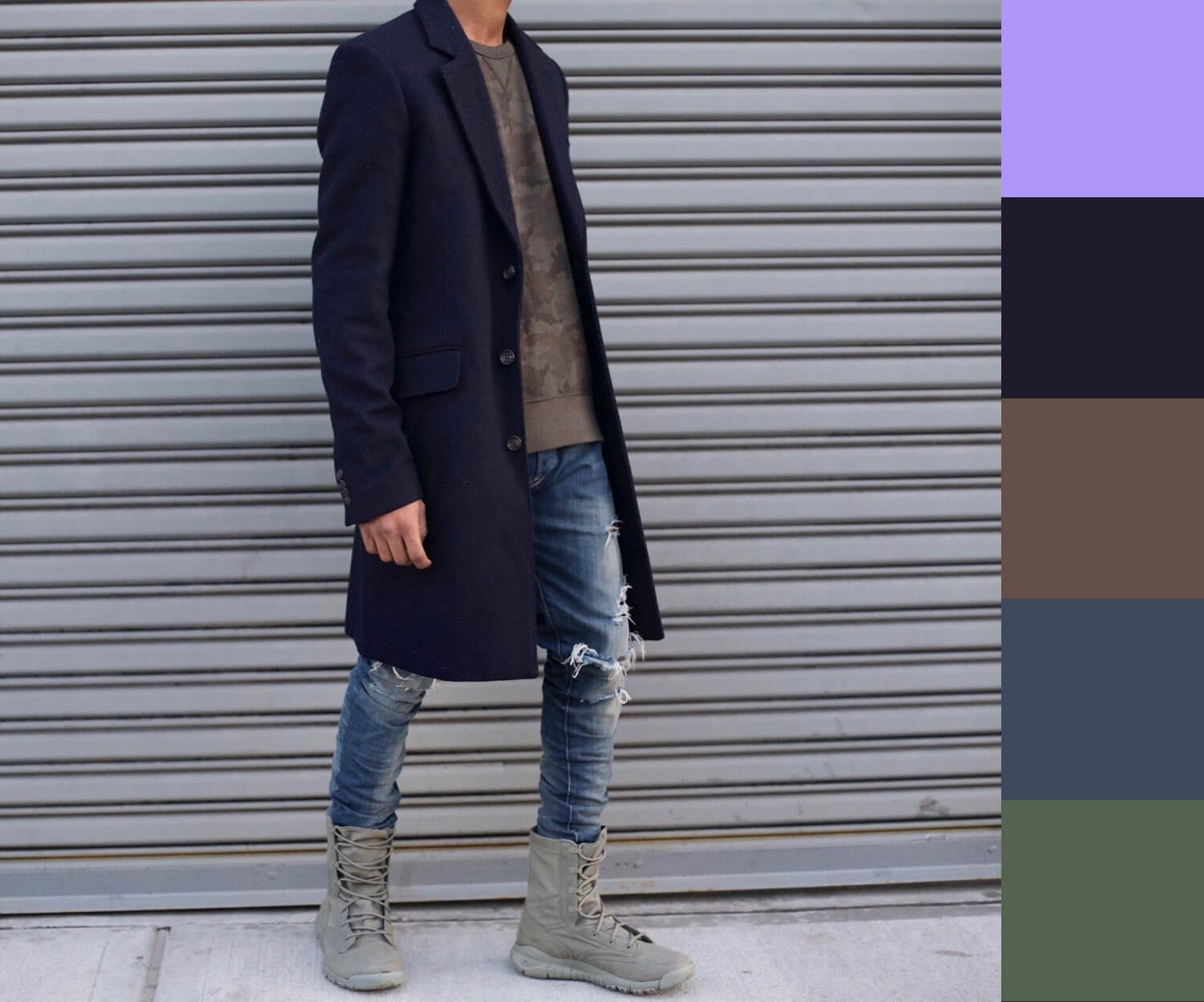
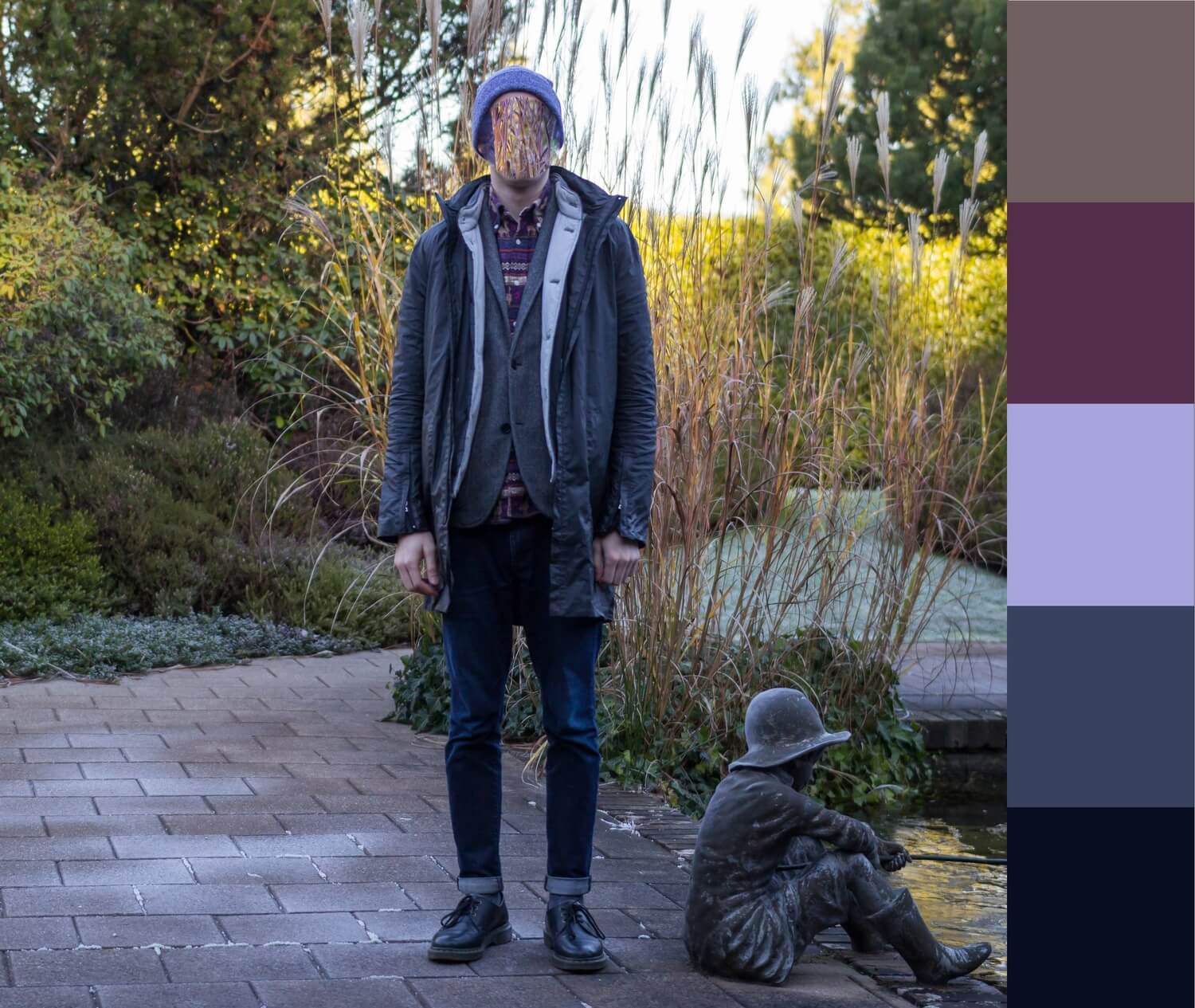
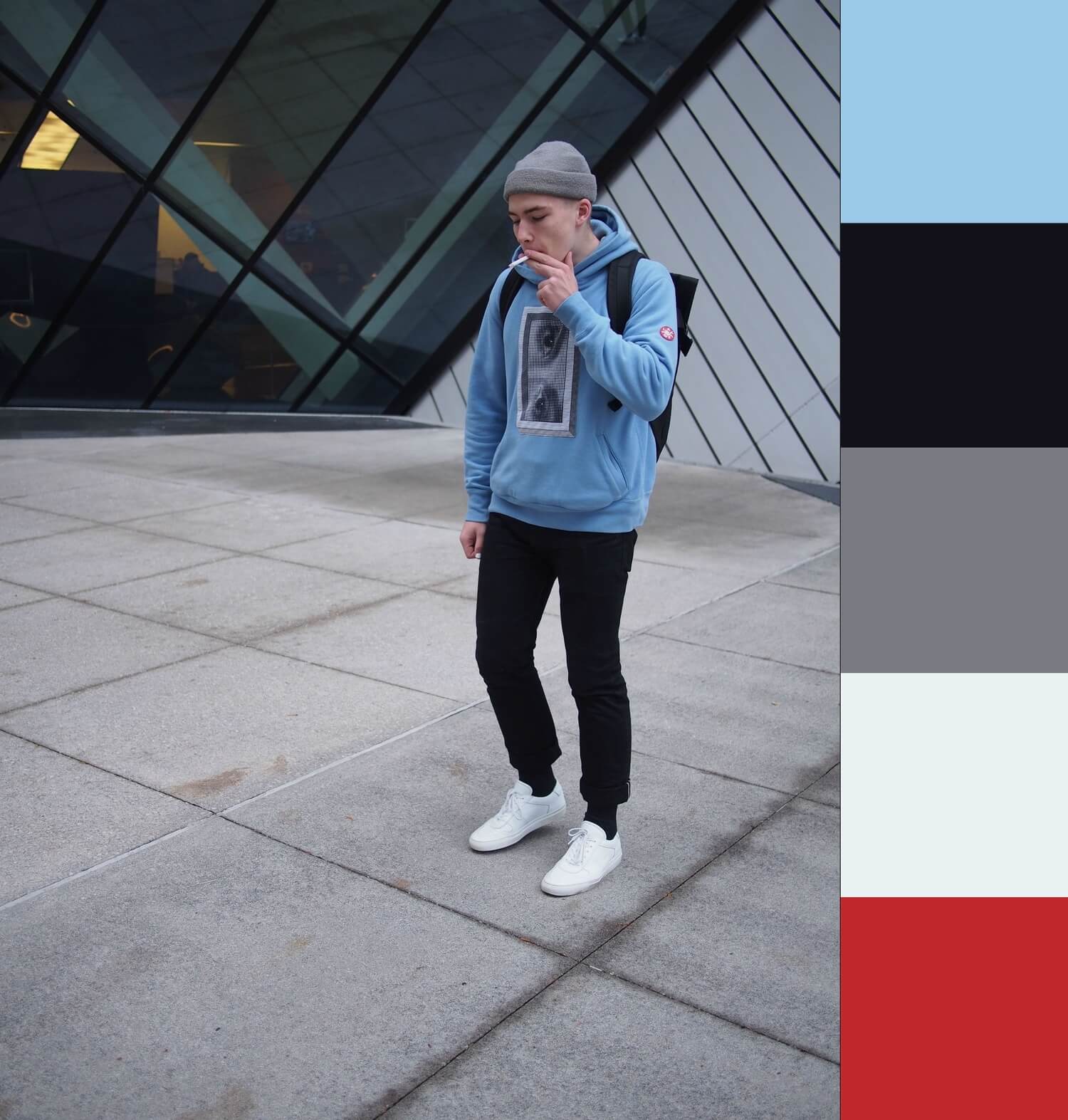
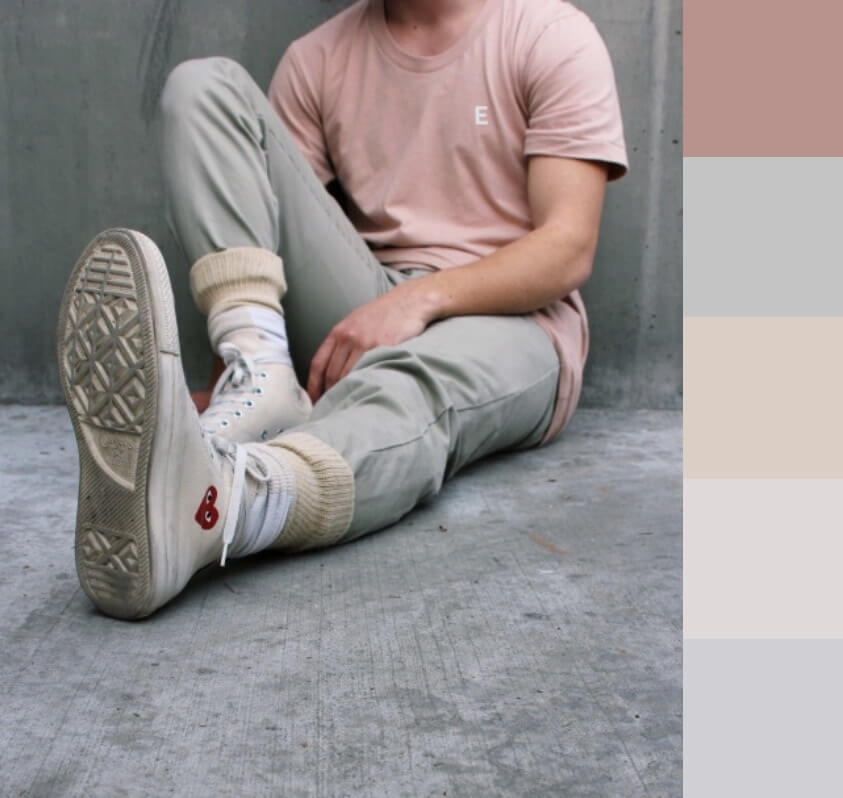
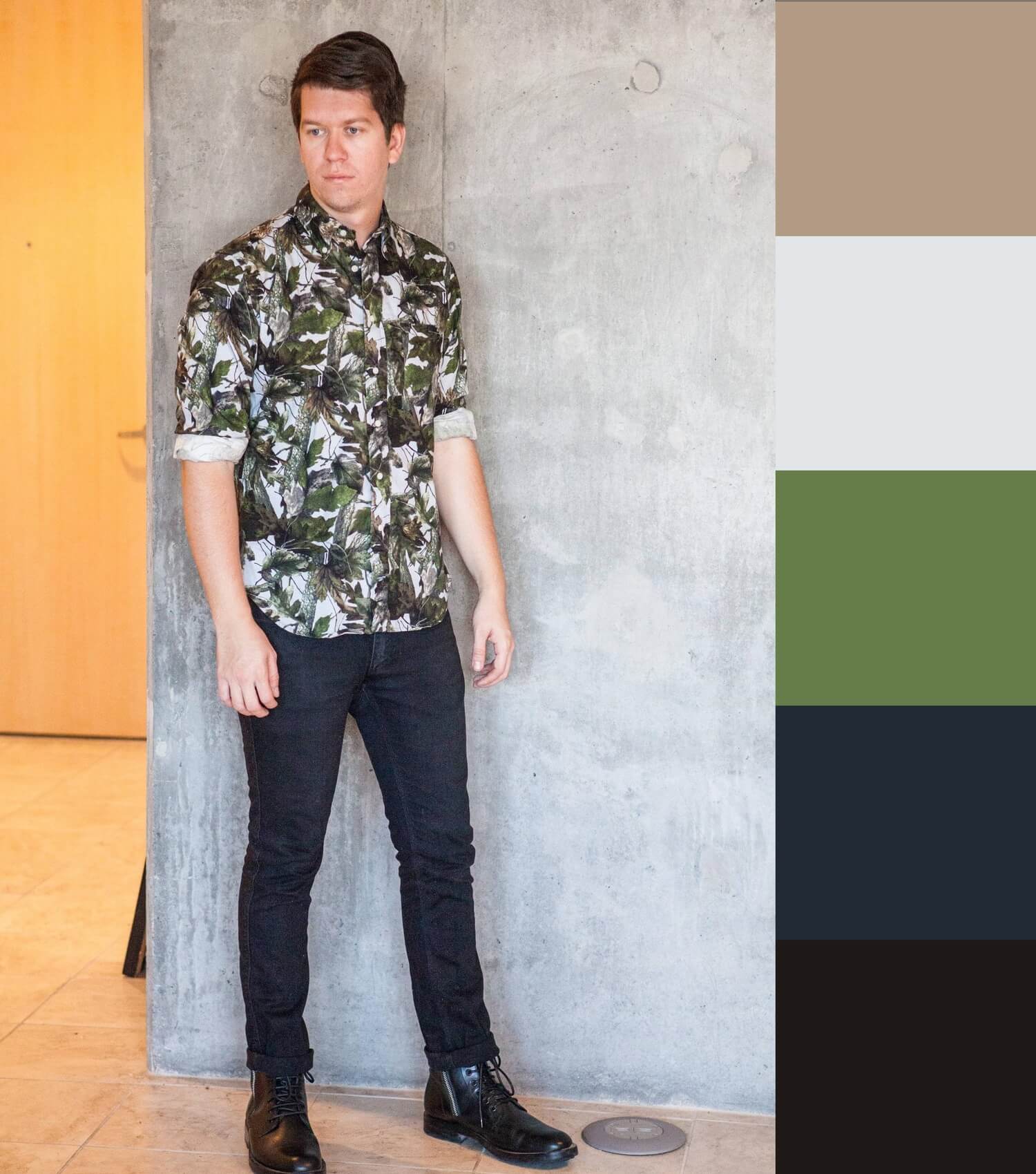
With this guide, you’ll have the knowledge, strategies, and confidence to tastefully build color into your wardrobe. Now go out there and peacock.
